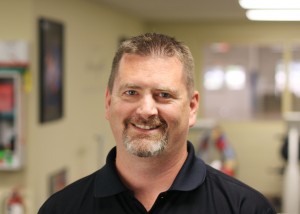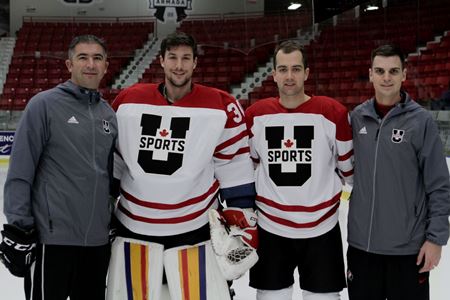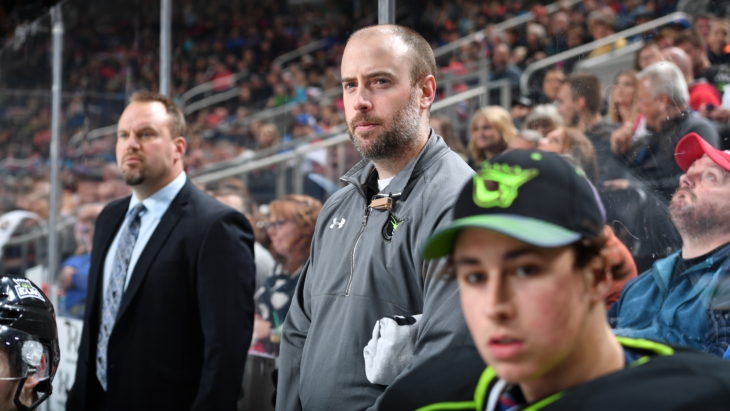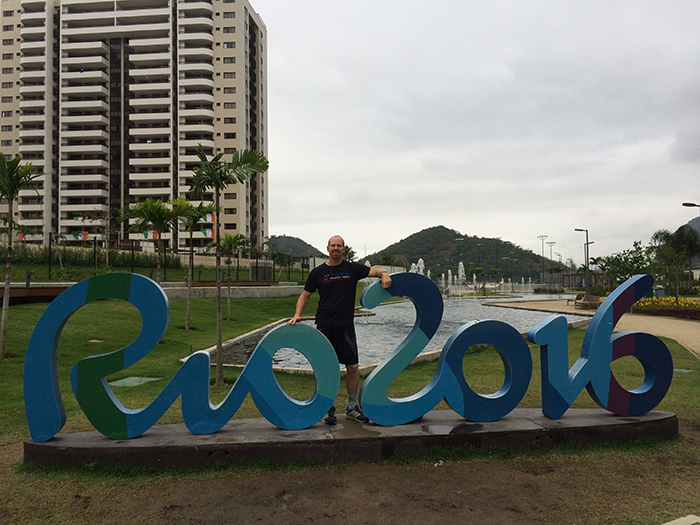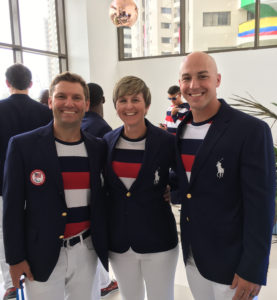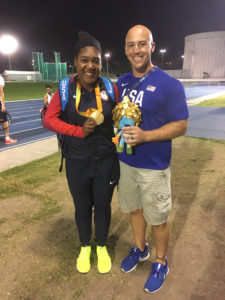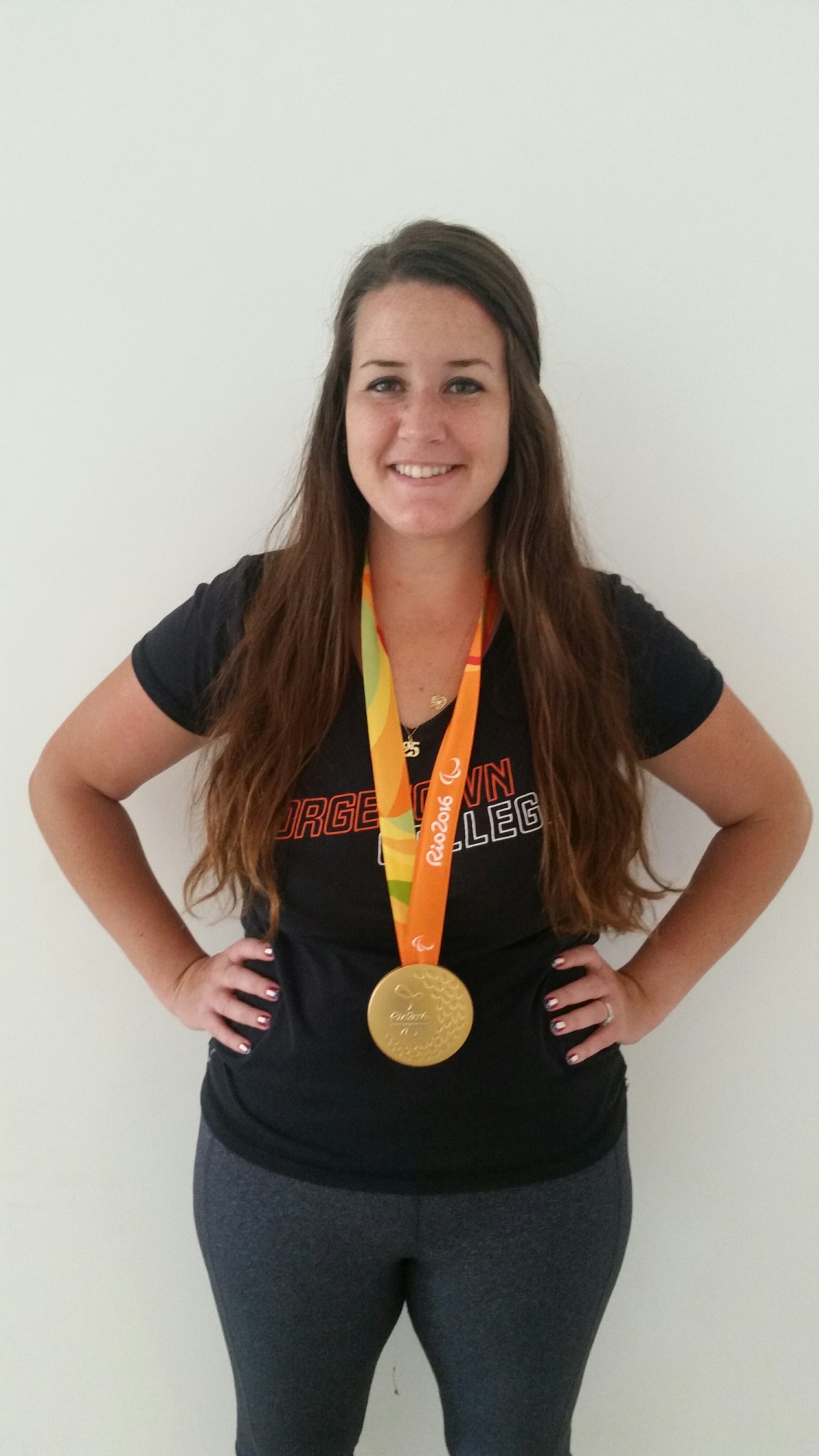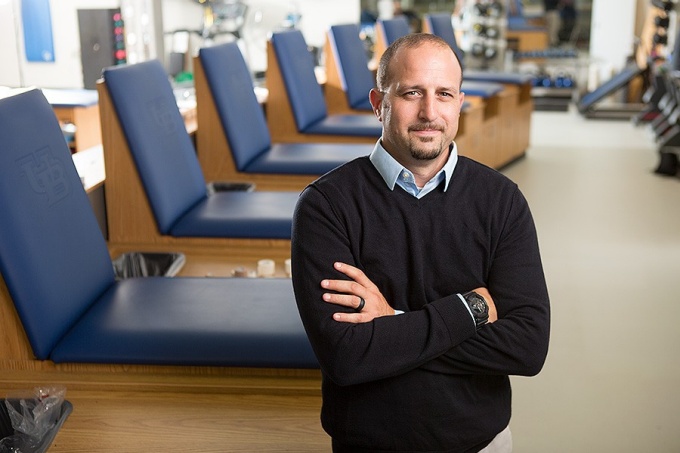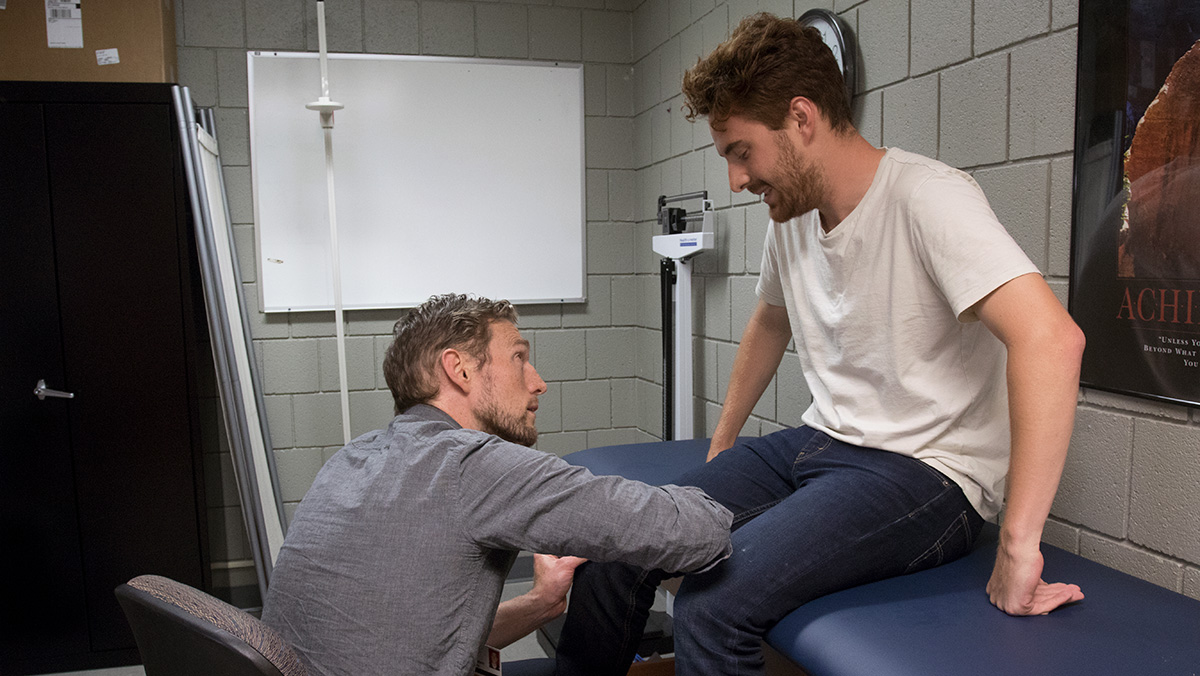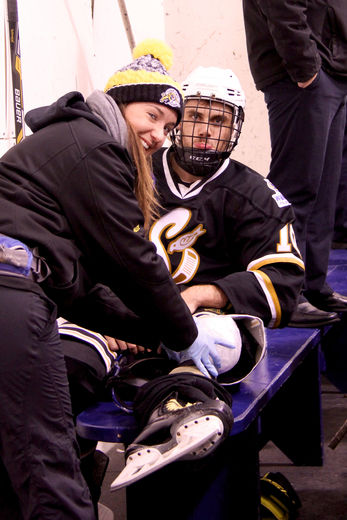
Article reposted from The Enterprise Bulletin
Author: Gisele Winton Sarvis
Alex Barton is at home with smelly, sweaty, testosterone filled young men who are giving their all for the game of hockey and sometimes suffering for it.
The athletic therapist for the Stayner Siskins, Barton is in her third year with the team being present and at-the-ready for every practice and game from summer training camp, through the regular season and the play-offs.
“I go everywhere with the team. It’s a big commitment. It can be really tiring,” Barton said in the trainer’s room while music blared before a game against the Penetang Kings.
“You learn how to be one of the guys, but sometimes they forget I’m a girl completely. And you get used to the smell. Not a first. It takes a while,” she said laughing.
During Thursday night’s game, she had a big sack of ice on Mack Falconer’s knee on the team bench, testing his mobility. Barton knew he had a pre-existing injury and discovered he didn’t have range of motion before the swelling took hold.
“So right away that tells me he can’t go out and play full tilt,” she said. “If the kids don’t have full range of motion, we don’t let them play.”
Later in the game, Kyle Paulitzki went into the boards head first and suffered a neck injury.
“There’s not a lot you can do for it immediately,” she said after the game as a player yelled out an obscenity in the hallway.
“You have to rule out if it’s an emergency. With neck injuries you are worried about a spinal and you have to look for tenderness in the neck, numbness, tingling or burning,” she said, as the music blared even louder.
She also checked another player’s shoulder in the hallway after the game.
Barton is often working on guys who are partially dressed and while she sees some nudity, she tries to keep it to a minimum.
“They know I’m here and I don’t go into the change room,” she said about the Siskins.
Also an emergency first responder, Barton attends to on-ice injuries. Last year a player from another team dislocated his kneecap and was in excruciating pain. Barton called an ambulance and stabilized and splinted his joint on the ice before the paramedics arrived and carried him to hospital.
Last year’s Siskins captain Ricky Darrell got hit hard and suffered a concussion during a game.
“He was not responsive right away so that was scary,” she said
“Other than that we’ve been lucky with the team in terms of bad injuries,” she said.
Barton sticks around after the game if there is injuries or pre-existing injuries that may get re-aggravated during the game. On Thursday night she was one of the last to leave the arena at about 11 p.m.
The Creemore resident works for herself at Synergy Health and Wellness Centre in Collingwood three days a week and at the Nottawa Wellness Centre two days a week and with the Siskins three or four times a week.
A graduate of the athletic therapy program of Sheridan College in 2011, Barton has been working in the field ever since.
“I enjoy working with sports teams. You get to see how the injury happens. When you see that, you are better able to treat the injury as it comes,” she said.
She got used to working in a men’s environment early on. While she was going to Sheridan she had placements with the University of Waterloo men’s rugby team and she worked with rep football teams during the summer. She’s also worked with boys hockey teams.
“It’s everyday. It doesn’t bother me anymore,” she said being around boisterous young men with colourful language.
She got interested in the field through lifeguarding.
“I always enjoyed helping people, so this involves both aspects, the emergency response part as well as helping people get back to doing what they love.”
The most rewarding part of the job is seeing players with an injury get better and get back on the ice, she said.
